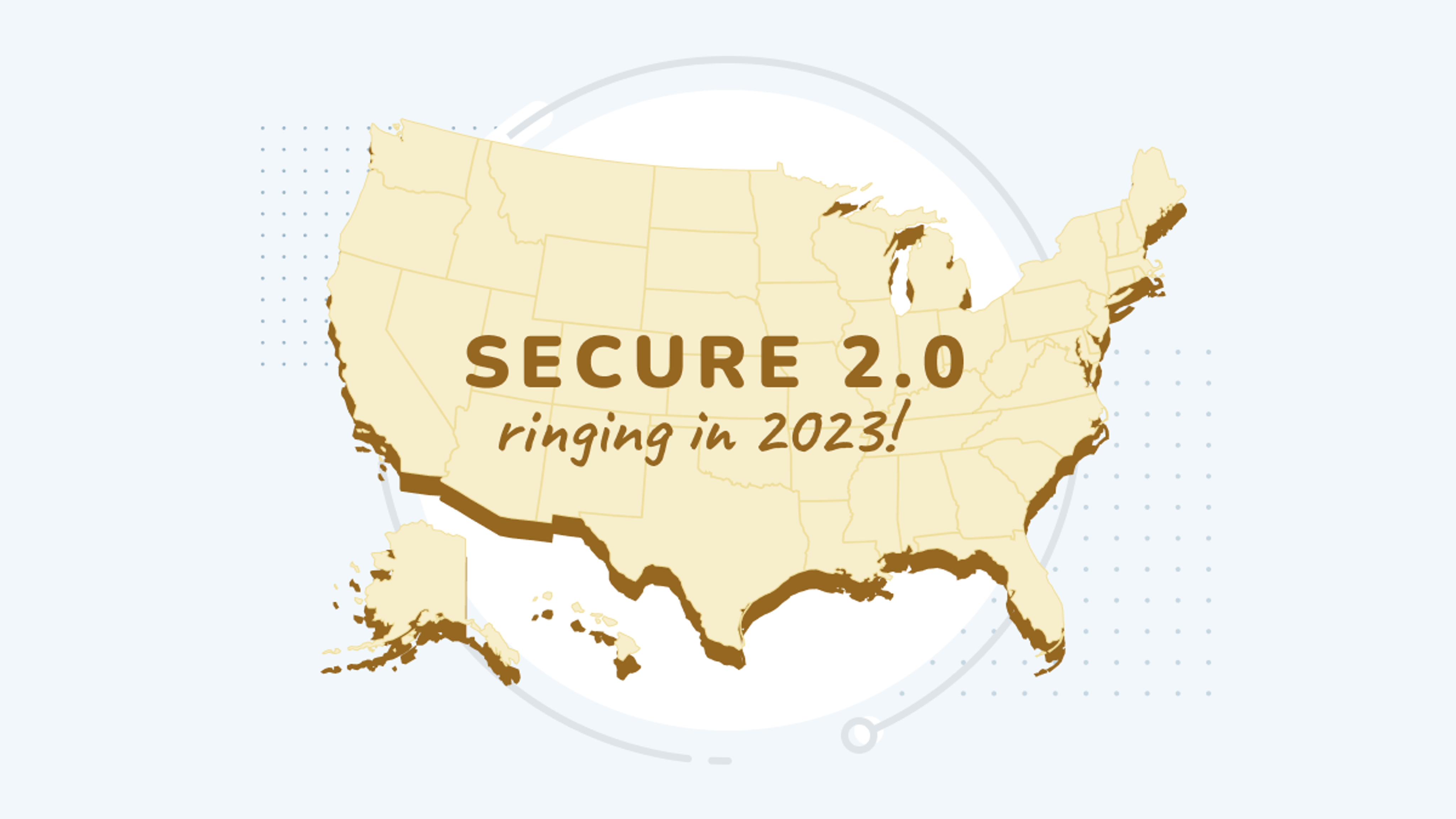SECURE 2.0: How 2023 Became the Best Year to Start a Small Business Retirement Plan

Previously, we discussed the potential $16,500 in tax credits available to small businesses that start a new retirement plan. However, with the recent passage of new legislation known as “SECURE 2.0,” those tax credits just got significantly larger.
In the last week of 2022, the U.S. Congress passed the Securing a Strong Retirement Act, the RISE and SHINE Act, and the EARN Act, dubbed collectively by supporters as “SECURE 2.0,” as part of its 2023 omnibus spending deal. The new legislation attempts to finish the work started with the SECURE Act of 2019 and includes several key provisions that have made offering a small business retirement plan much more affordable.
In this article, we’ll be discussing the major impacts of SECURE 2.0, with a focus on the items that promote small business retirement plan adoption.
SECURE 2.0: Tax Credits to Sweeten the Deal for New Retirement Plans
SECURE 2.0 has introduced a tax credit available to employers who offer a new defined contribution plan. Employers with 50 or fewer employees can receive a startup credit of 100% of administrative expenses, up to $5,000 per year, for three years. The full credit is available to employers with 50 or fewer employees, phasing out for employers with more than 100 employees.
Additionally, employers can also receive a tax credit equal to the amount of contributions they have made on behalf of non-highly compensated employees (those making under $150,000 per year), up to $1,000 per employee. Taken together, the changes brought by SECURE 2.0 have made it significantly more affordable for small businesses to start a new retirement plan. With administrative expenses fully creditable up to $5,000 and contributions creditable up to $1,000 per employee, small businesses have the ability to bolster their benefits package and compete for talent in 2023. Small businesses can also continue to take tax deductions, even beyond the tax credits, for qualified contributions to their retirement plans consistent with the IRS and Department of Labor limits.
SECURE 2.0: Changes to Encourage Employee Plan Participation
SECURE 2.0 also brought a suite of changes that seek to increase employee plan participation. In WTW’s 2022 Global Benefits Attitudes Survey, nearly 60% of employees surveyed cited their employers' retirement benefits as an important reason they remain with their current employer, compared with 41% in 2010. These findings demonstrate the importance of not only offering a retirement plan, but also encouraging its uptake.
A significant change introduced by SECURE 2.0 requires that new defined contribution plans automatically enroll employees once they become eligible to participate in the employer’s retirement plan. Employees begin their enrollment with a default 3% pre-tax contribution that gradually increases by 1% each year, up to at least 10% but not more than 15% of the employee's earnings. Mandatory auto-enrollment facilitates increased adoption of a retirement plan, although there are exemptions for businesses with 10 or fewer employees, those in business for less than three years, church plans, and government plans.
SECURE 2.0 boosts retirement plan participation by expanding the pool of eligible employees. The legislation shortens the amount of time that long-term, part-time workers need to work at a business before reaching eligibility—from three years down to two years. On top of this, employers can also offer small incentives, like a gift card, to further encourage participation in their company-sponsored retirement plan.
SECURE 2.0: Other Saving-Related Benefits You Can Offer Your Employees
Not only does SECURE 2.0 seek to increase the number of employers offering a retirement plan, it also enables employers to incorporate new savings-related offerings into their overall employee benefits packages.
For many, it can be difficult to set aside money for retirement while trying to make payments on student loans. As a result, some employees do not make contributions to their retirement plan, missing out on valuable employer contributions that could significantly increase their retirement savings. Under SECURE 2.0, employers are now permitted to match (up to a certain limit) qualified student loan payments as contributions to retirement for employees with student loans, opening the door for employees to pay off their student loans while building a nest egg at the same time.
Before SECURE 2.0 was passed, employer-matching retirement plan contributions could only be paid into employees' pre-tax 401(k) retirement plan accounts. Now, employers can offer their employees the option to elect that some or all of their matching contributions be treated as Roth contributions for their retirement account. Roth contributions are made on an “after-tax” basis, thereby not being excluded from the employees' gross income.
Conclusion: Can I Start a New 401(k) Retirement Plan?
SECURE 2.0 has made offering a retirement plan easier than ever before. As a small business owner, you have the opportunity to help close the savings gap, fight America’s growing retirement crisis, and lend a helping hand to your employees.
If you are interested in setting up a 401(k) account for your business to claim the SECURE 2.0 tax credits, you can contact Vestwell to help determine your benefit amount and start a no-hassle retirement plan, all from the comfort of your home.
Vestwell Holdings Inc. and its affiliates do not provide tax, legal or accounting advice. This material has been prepared for informational purposes only, and is not intended to provide, and should not be relied on for, tax, legal, or accounting advice nor as a solicitation or recommendation of any investment. You should consult your own tax, legal and accounting advisors before engaging in any transaction or making any changes to your retirement plan.